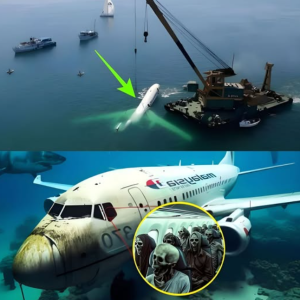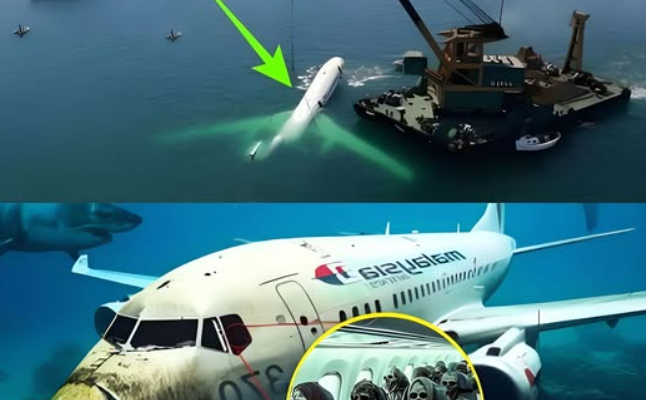In the early hours of March 8, 2014, Malaysia Airlines Flight MH370 taxied down the runway at Kuala Lumpur International Airport. It was just after midnight when the Boeing 777, carrying 239 people on board, lifted into the night sky bound for Beijing Capital International Airport. The weather was calm, and the flight appeared routine. Nothing suggested that the journey would end in one of the greatest aviation mysteries of all time.
At 1:01 a.m. local time, the aircraft reached its cruising altitude of 35,000 feet. Everything seemed normal. The pilots were in regular contact with air traffic control. At 1:07 a.m., the plane’s ACARS system — which automatically sends data about the aircraft’s mechanical status — transmitted its final report. It was scheduled to send another update 30 minutes later, but that transmission never came. Fourteen minutes later, at 1:19 a.m., came the last known voice transmission from the cockpit. A calm male voice said, “Good night, Malaysian Three Seven Zero.” It was a standard handover between Malaysian and Vietnamese air traffic controllers. It sounded ordinary. But moments later, something extraordinary happened.
At 1:21 a.m., the aircraft’s transponder — which communicates its position to civilian radar — was switched off or stopped functioning. On civilian screens, the flight disappeared. For a few moments, it seemed like an equipment malfunction. But military radar soon picked up something unexpected. MH370 had veered off its planned northeast course and made a sharp turn to the left, heading back toward the Malaysian Peninsula. It then passed over the Strait of Malacca and continued northwest, toward the Andaman Sea. This course change was not random; it appeared to be deliberate. Whoever was controlling the plane knew how to avoid standard radar corridors.
The last recorded radar contact came at 2:22 a.m. after the plane crossed over the Andaman Sea. Then it vanished from all radar screens. The world would not see or hear from MH370 again. But the plane’s satellite communication system remained partially active. The aircraft’s Satellite Data Unit made a series of hourly “handshakes” with an Inmarsat satellite. These were not messages from the crew, but automated pings confirming that the plane’s systems were still powered. These signals allowed investigators to determine that the plane continued flying for several more hours after it disappeared from radar.
The final handshake came at 8:11 a.m. local time. This strongly suggested that the aircraft had remained airborne for nearly seven hours after it vanished from civilian tracking systems. Based on the satellite data and fuel calculations, experts concluded that MH370 likely ran out of fuel somewhere over the southern Indian Ocean and crashed into the water. But that conclusion opened even more questions than it answered. Why did the plane change course? Why was no distress call made? What happened on board during those seven silent hours?
The search that followed became the largest and most expensive in aviation history. Dozens of countries joined the effort. Ships, planes, and satellites scoured vast stretches of ocean. The main focus shifted to a remote area of the southern Indian Ocean, west of Perth, Australia. Investigators used drift models, satellite handshake data, and ocean current analysis to narrow down possible crash sites. Between 2014 and 2017, search teams covered nearly 120,000 square kilometers of seabed. Yet, astonishingly, they found nothing.
In 2015, a breakthrough came when a flaperon — a piece of a Boeing 777 wing — washed up on Réunion, an island in the Indian Ocean. It was confirmed to be from MH370. Over the next two years, additional debris fragments were found on islands along the western Indian Ocean and the east coast of Africa. These discoveries proved that the plane had indeed gone down somewhere in the southern Indian Ocean. But none of the debris provided enough evidence to determine exactly where the aircraft had crashed or why.
Multiple theories emerged. Some experts believed that a sudden catastrophic event, such as a fire or decompression, incapacitated the crew and passengers, leaving the plane to fly on autopilot until its fuel ran out. Others suspected deliberate action — possibly by someone in the cockpit who may have carefully planned the diversion. There were also less likely theories involving hijacking or a mechanical chain reaction. But without the black boxes — the flight data recorder and cockpit voice recorder — there was no way to know for sure.
Families of the 239 passengers and crew endured unimaginable pain as years passed without answers. Vigils were held, investigations continued, and governments promised renewed efforts. But the ocean is vast, and the area where the plane was believed to have gone down is among the most remote and challenging places on Earth. Depths in the search zone reach up to 6,000 meters. Strong currents, rough weather, and a rugged seabed made the search extraordinarily difficult.
The official search was suspended in 2017 after failing to locate the wreckage. But the mystery refused to fade. Independent experts continued to analyze the satellite data, believing the crash site was just outside the original search area. In 2018, Ocean Infinity, a private U.S. marine robotics company, conducted a new search under a “no find, no fee” agreement with Malaysia. Despite covering thousands of additional square kilometers with advanced underwater drones, the wreckage remained elusive.
Years later, the case is still open. In 2024, Ocean Infinity proposed another renewed search mission based on refined data and new analysis of ocean drift patterns. Malaysia has indicated it is open to resuming the search if credible new evidence is presented. In early 2025, the company began preparing vessels to return to the southern Indian Ocean, targeting a new 15,000 square kilometer zone that experts believe may hold the aircraft’s remains.
The disappearance of MH370 remains one of the most puzzling events in modern aviation. It exposed weaknesses in global aircraft tracking systems and spurred calls for new technology to ensure planes can never vanish without trace again. New international regulations now require aircraft to automatically report their position more frequently, especially over oceans. These changes came too late for the 239 people on MH370, but they may prevent future disappearances.
For the families of those on board, the pain has not faded with time. They continue to fight for answers, for accountability, and for the closure that can only come from finding the wreckage. Each year, on March 8, they gather to honor their loved ones. Photographs of passengers, once filled with hope and joy, now stand as silent reminders of a flight that never arrived.
The timeline of that night remains painfully clear. At 12:41 a.m., the plane took off. At 1:07 a.m., the ACARS went silent. At 1:19 a.m., the final words were spoken. At 1:21 a.m., the transponder disappeared from radar. At 2:22 a.m., the last military radar blip vanished over the sea. And at 8:11 a.m., the final satellite handshake marked the last known trace of MH370. In those missing hours, something profound and irreversible happened — something that has eluded the world for more than a decade.
The ocean has kept its secret well. But technology has advanced, and determination has not faded. Many experts believe that the wreckage of MH370 will eventually be found, perhaps lying silent on the seabed, waiting to tell its story. When that day comes, investigators may finally learn what happened in those final hours — whether it was mechanical failure, human decision, or a tragedy of another kind.
Until then, MH370 is more than just an aviation case. It is a symbol of human hope and loss, of the vastness of the world we live in, and of how even in an age of technology, a giant aircraft can vanish without a trace. It is a reminder that closure is not guaranteed, that mysteries can endure, and that the search for truth sometimes spans not just years but generations.
The final moments of MH370 may remain hidden beneath thousands of meters of water, but the determination to uncover them continues. For the families. For the passengers and crew. And for a world that still asks, after all these years: Where is MH370?


